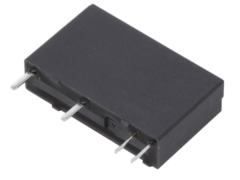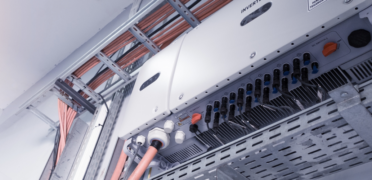Output volumes in the three months to October fell at their slowest pace since March 2020, according to the latest CBI quarterly Industrial Trends Survey. Output dropped in 10 out of 17 sub-sectors, with the headline decline driven by the aerospace sector.
The survey of 310 manufacturing firms found that total new orders were broadly flat in the three months to October following their sharp drop in July and a total of five successive quarters of decline. Domestic orders picked up slightly, while export orders fell at a much slower pace than the previous quarter.
Headcount in the quarter to October fell at a slower pace than in July (when it declined at the fastest rate since April 2009).
Business sentiment in the quarter to October was stable for a second quarter, while export sentiment fell at a slightly quicker pace than in July.
Looking ahead to the coming quarter, manufacturers expect output to grow at a moderate pace. However, total new orders are anticipated to remain unchanged, reflecting steady growth in domestic orders and a slower fall in export orders.
Meanwhile, almost a third of manufacturers are concerned that access to materials or components may limit their output over the quarter ahead. Headcount is expected to be broadly unchanged in the next quarter, following six quarters of decline. And manufacturers are less concerned that access to finance could constrain near-term output or investment plans.
Rain Newton-Smith, CBI Chief Economist, said:
“Conditions remain tough in the manufacturing sector, with output and orders still down on the quarter, albeit to a lesser degree. The government must stay on the front foot when it comes to providing support for the sector and wider economy.
“It is more crucial than ever for the government to listen to the experiences and concerns of businesses and ensure support matches the tightness of local lockdowns. Additionally, signing a trade deal with the EU would help create some clarity that firms so badly need during this fraught period.”
Tom Crotty, Group Director at INEOS and Chair of the CBI Manufacturing Council, said:
“While it is welcome to see a slightly rosier picture for manufacturing, there’s no escaping the fact that firms have endured another incredibly difficult quarter. The sector is not out of the woods yet and it will be important for the government to continue to support businesses as we approach the winter.
“Manufacturers will also be closely observing progress with Brexit negotiations as the deadline for a deal approaches. Manufacturing jobs, businesses and livelihoods are very much at stake and it is essential that leaders find a way through the current impasse and secure a deal.”
Output
- Output volumes in the quarter to October fell at their slowest pace since March 2020 (-8% from -20% in September).
- Output dropped in 10 out of 17 sub-sectors. The headline fall in output volumes was led by the aerospace manufacturing sub-sector.
- Manufacturers expect output to grow in the next quarter (+15%).
Orders
- Total new orders in the quarter to October were broadly flat (+3%) following their sharp drop in July (-60%). Domestic orders picked up slightly (+5 from -64% in July) while export orders fell at a much slower pace than in July (-14% from -62%)
- Manufacturers expect total new orders to remain unchanged next quarter (0%) and domestic orders (+4%) to grow at a similar pace, while export orders are anticipated to fall slightly (-4%).
Headcount
- Numbers employed in the three months to October fell at a slower pace than in July (-27 from -47% in July). Firms expect headcounts to be broadly flat next quarter (+3%).
Costs and prices
- Average costs growth in the quarter to October (+16%) slowed from July (+32%) but is expected to accelerate somewhat next quarter.
- Average domestic prices were roughly flat in the quarter to October (-1%) after falling quickly in July (-24%). Average export prices (-12%) fell at a slower pace than in July (-28%). Firms expect domestic prices to pick up slightly in the next quarter (+4%) while export prices are anticipated to be unchanged (0%).
Business sentiment
- Business sentiment remained unchanged in the three months to October (0 from -1% in July). Export sentiment fell at a slightly quicker pace (-21%) than in July (-17%).
Investment
- Firms expect investment in buildings, plant & machinery, and training & retraining to decline in the next year, but to a lesser extent than last quarter. Capital expenditure in product & process innovation is expected to pick up slightly.The share of firms citing uncertainty about demand (54%) as a factor to limit investment in the next year declined to roughly its long-run average, following last quarter’s survey record high (76%).
- The share of manufacturers mentioning internal finance shortage (17% from 43% in July), inability to raise external finance (6% from 35% in July), and the cost of finance (2% from 33% in July) as factors to limit capital expenditure declined noticeably from last quarter’s survey record highs.









